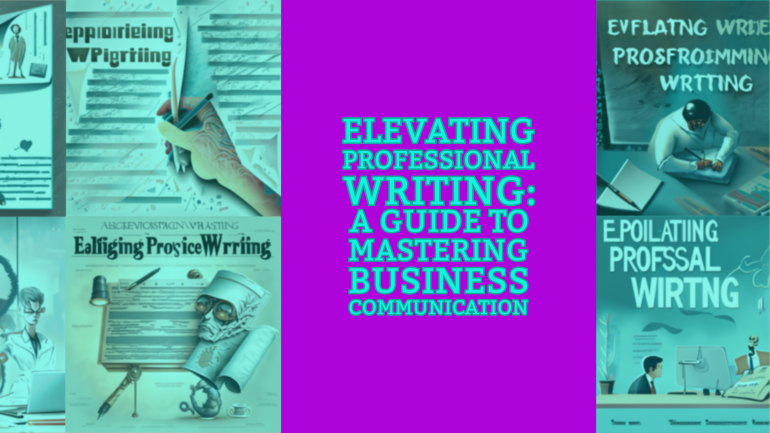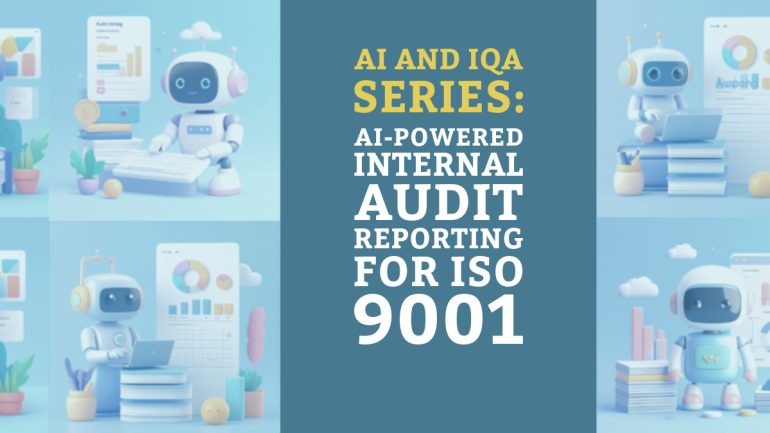This website uses cookies so that we can provide you with the best user experience possible. Cookie information is stored in your browser and performs functions such as recognising you when you return to our website and helping our team to understand which sections of the website you find most interesting and useful.
Table of Contents
TL;DR: Enhancing Your Written Business Communication
- Understand Your Audience: Tailor messages to the audience’s level and cultural context for effective communication.
- Clarity and Conciseness: Use straightforward language and structure for clear, impactful messages.
- Leverage Technology: Tools like Grammarly and templates improve writing quality and efficiency.
- Practice and Seek Feedback: Continuous writing practice and feedback are key to refining communication skills.
Introduction
In the digital age, where the majority of Professional Writing interactions occur online, mastering written business communication has become more than just a skill—it’s a necessity. Whether drafting a concise email, compiling a comprehensive report, or crafting a compelling proposal, the quality of your written communication can dramatically influence your professional image, decision-making processes, and overall career trajectory. Recognizing the significance of this skill, the following guide offers practical strategies to sharpen your written communication, aiming to transform your ability to articulate thoughts and ideas with precision and professionalism. Embracing these steps will not only boost your confidence in writing but also enhance your effectiveness in today’s fast-paced business environment.
Understanding Your Audience
The foundation of impactful written communication lies in a deep understanding of your audience. Identifying who your readers are, grasping their level of expertise, and acknowledging their expectations shapes the framework of your message. Tailoring your communication to the audience’s perspective ensures that your message is not just heard, but resonated with, whether you’re addressing a close-knit team or a diverse group of stakeholders. Incorporating mechanisms for feedback within your communication strategy enables a two-way dialogue, allowing for adjustments and fostering a more engaged and invested audience. In a global professional landscape, recognizing and adapting to cultural subtleties can further enhance the receptivity of your message, underscoring the importance of audience awareness in effective written communication.

Clarity and Conciseness
Achieving clarity and conciseness is paramount in written business communication. A well-structured message, free from ambiguity and unnecessary complexity, facilitates quick understanding and action. Employing a straightforward structure, punctuated with headings and bullet points, guides the reader through your message efficiently. The use of plain language, free from industry jargon or convoluted sentences, ensures accessibility and inclusiveness. Opting for an active voice energizes your writing, making your message more compelling and engaging. By distilling complex concepts into digestible segments, you not only respect your reader’s time but also promote a clearer understanding, making your communication more effective.
Effective Use of Technology
In the quest for impeccable written communication, technology emerges as a powerful ally. Writing enhancement tools, such as Grammarly or Hemingway, serve as vigilant editors, catching errors and suggesting improvements to elevate the quality of your writing. The utilization of templates can standardize and expedite the creation of routine documents, ensuring consistency and saving valuable time. Advances in artificial intelligence offer sophisticated assistance in fine-tuning tone, style, and readability, adapting your writing to various needs and audiences. Embracing these technological tools requires a blend of curiosity and discernment, as integrating them into your writing process can significantly augment the clarity, impact, and professionalism of your communication.
Practice and Feedback
The path to refining your written business communication is paved with diligent practice and open reception to feedback. Actively seeking writing opportunities across diverse formats can broaden your experience and flexibility as a writer. Encouraging feedback from peers, mentors, or supervisors opens avenues for growth, highlighting areas for improvement and reinforcement. Viewing feedback as a constructive element of your development fosters a culture of continuous learning and skill enhancement. Documenting your writing journey through a portfolio not only tracks your progress but also reveals recurring patterns and personal growth areas, enabling targeted improvement. Participating in writing workshops or groups can immerse you in a community of shared knowledge and diverse perspectives, further enriching your skills and understanding of effective business communication.
Conclusion
Cultivating advanced written business communication skills is an iterative process, marked by a commitment to excellence and a proactive approach to learning. By strategically focusing on audience alignment, clarity, technological integration, and continuous improvement through feedback, you can significantly elevate your professional writing. Effective written communication serves not only to convey information but to forge stronger connections, build credibility, and advance your professional goals. As you navigate the evolving landscape of business communication, remember that each step forward in enhancing your writing opens new opportunities for success, leadership, and meaningful professional relationships. In this journey, the commitment to refining your written communication skills is an investment in your career and a testament to your professional dedication.
FAQs
Q1: How can I make my business writing more engaging for my audience?
A1: To make your writing more engaging, start by understanding your audience’s interests and needs. Use active voice, incorporate storytelling where appropriate, and include relevant examples or anecdotes to illustrate key points.
Q2: What’s the best way to ensure my business writing is free of errors?
A2: Besides using spellcheck and grammar tools like Grammarly, it’s beneficial to have someone else review your work. Taking a break and revisiting your writing with fresh eyes can also help catch errors.
Q3: How can I improve the clarity of my business documents?
A3: To improve clarity, use simple and concise language, avoid jargon, and break down complex ideas into manageable pieces. Structuring your document with clear headings, bullet points, and short paragraphs also aids readability.
Q4: Are there specific templates I should use for different types of business communication?
A4: Yes, using templates for emails, reports, proposals, and other business documents can help maintain consistency and professionalism. Customize templates to fit your company’s brand and the document’s purpose.
Q5: How important is tone in written business communication, and how can I adjust it?
A5: Tone is crucial as it conveys your attitude towards the subject and the reader. To adjust the tone, consider the context, your relationship with the audience, and the message’s purpose. Aim for a tone that’s professional, respectful, and aligns with the desired outcome of your communication.





